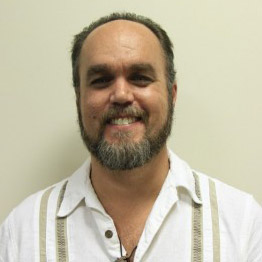 My first workshop in restorative justice was just a few years ago. I had been studying the literature, and considering how the work I was doing fell within the RJ framework, but I had yet to meet any practitioners from the outside.
My first workshop in restorative justice was just a few years ago. I had been studying the literature, and considering how the work I was doing fell within the RJ framework, but I had yet to meet any practitioners from the outside.
That changed when some volunteers from the Georgia Council for Restorative Justice visited me in prison. I had written them a letter asking for help, and they answered that request in ways far beyond what I hoped for.
We met in a small classroom in the library. One of the first exercises we did was to stand in a circle, 10 or 12 men and two or three women. One of the women held a ball of yarn. She said her name, and then added the name of someone she was connected to outside of the circle. Next, holding on to one end, she threw the ball of yarn across the circle to the next person, who followed suit. In a short time we stood holding a web of yarn, each strand representing our often-unseen connections to one another.
One basis of restorative justice is the recognition of the web of interconnectedness that we exist in. This is not a metaphysical abstraction, but an accurate description of reality. One of the reasons restorative programs have been so effective is this holistic view. Solutions to the problems of justice cannot exist in isolation from other elements.
I was reminded of this recently while reading an op-ed in Tallahassee.com by Cathy Craig–Myers, the executive director of the Florida Juvenile Justice Association. She was commenting on the recent roadmap proposed by the Florida Department of Juvenile Justice as a way to overhaul their system, and offering praise for its vision while simultaneously pointing out issues of concern. In her analysis of the latter I saw a commitment to thinking in terms of the network within which youth exist.
She noted four issues that her group thought should be dealt with. The first is a recommendation by DJJ to return to the use of probation officers to monitor kids returning from residential placements. Currently, Florida uses a community-based model that includes “supervision, case management and treatment and uses local community organizations to see that the whole child and the child’s family are appropriately supported.” The numbers for this kind of program are good compared to probation monitoring.
The second issue she raises is education of young people while they are incarcerated. Without addressing this need in a more comprehensive and proven way, the chances for the child’s rehabilitation are in jeopardy.
The third is the transfer or waiver of children into the adult system. Despite the fact that kids so transferred face higher rates of recidivism, suicide, and sexual assault, the state sent over 2,700 kids to adult court last year. Most of the laws about juvenile transfer were written during the 90s in response to the so–called super-predator juveniles who were right around the corner. These predictions have been proven false, yet the laws to deal with them remain in place, affecting not bogeymen but real kids.
Lastly, she looks at the needs of girls, “the fastest growing segment” of the system. The dynamics of female juvenile offenders are often different, and the state needs to do more to recognize this. Girls often have histories of abuse, victimization, and dysfunctional families.
Ms. Craig–Myers does an excellent job of recognizing the progress Florida has made, noting the promising aspects of the DJJ roadmap, while still maintaining her overall view of what needs to happen. It is this level of thinking that must be brought to bear in policy discussions if we hope to see real advancement in how juvenile justice works.































